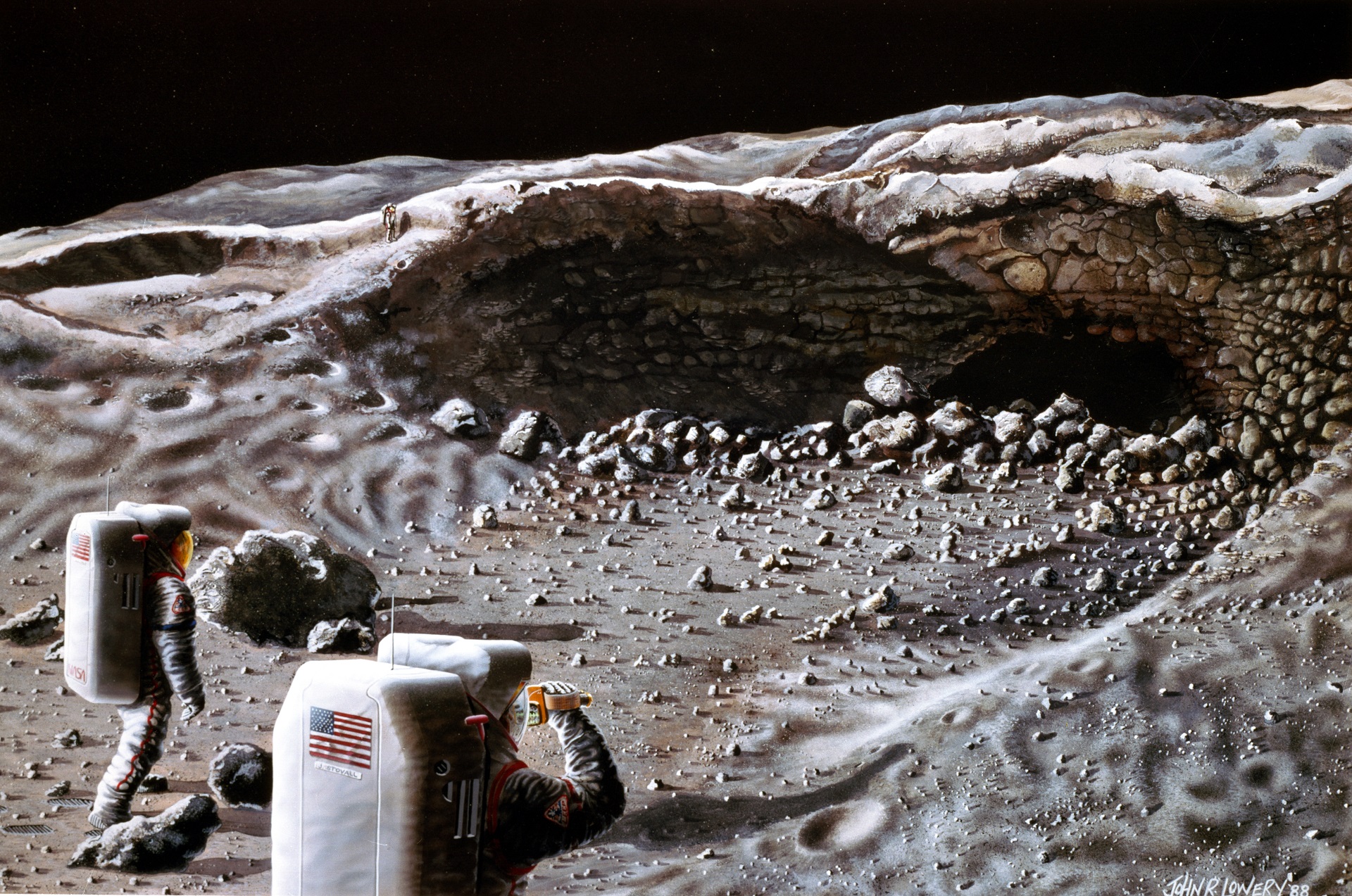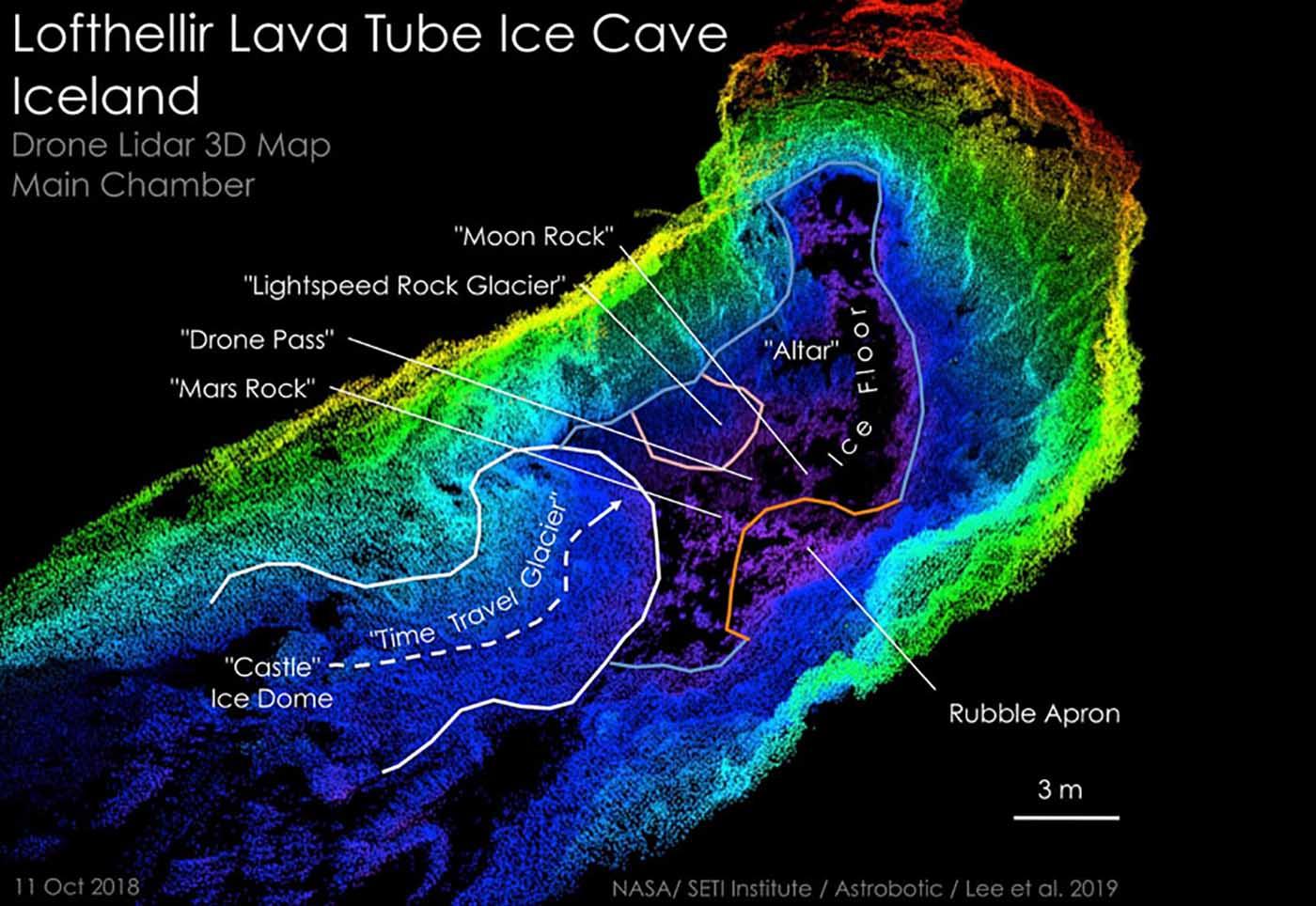Lunar Cave Exploration: Nasa Moon Caves

Lunar caves are an intriguing and potentially valuable target for future lunar exploration missions. They offer a unique environment that is protected from the harsh conditions on the lunar surface, and they may contain valuable scientific information about the Moon’s history and evolution.
There are two main types of lunar caves: lava tubes and skylights. Lava tubes are formed when molten lava flows through a crack or fissure in the lunar surface and then cools and solidifies, leaving behind a hollow tube. Skylights are formed when the roof of a lava tube collapses, creating an opening to the surface.
Both types of lunar caves offer unique scientific opportunities. Lava tubes can provide a protected environment for astronauts to live and work, and they may contain valuable mineral resources. Skylights can provide access to the lunar surface without the need for a rover or lander, and they may offer a unique perspective on the lunar landscape.
Exploring lunar caves presents a number of challenges, including the need to develop new technologies for navigating and mapping these complex environments. However, the potential rewards are great, and lunar caves could play a major role in future human exploration of the Moon.
Significance of Lunar Caves for Future Lunar Exploration Missions
Lunar caves offer a number of potential benefits for future lunar exploration missions, including:
- Protection from radiation: The thick walls of lunar caves can provide protection from the harmful radiation that is present on the lunar surface.
- Stable temperature: The temperature inside lunar caves is relatively stable, which could make it easier for astronauts to live and work in these environments.
- Access to resources: Lunar caves may contain valuable resources, such as water ice and minerals, which could be used to support future lunar exploration missions.
- Scientific value: Lunar caves may contain valuable scientific information about the Moon’s history and evolution.
Types of Lunar Caves, Nasa moon caves
There are two main types of lunar caves: lava tubes and skylights.
- Lava tubes: Lava tubes are formed when molten lava flows through a crack or fissure in the lunar surface and then cools and solidifies, leaving behind a hollow tube.
- Skylights: Skylights are formed when the roof of a lava tube collapses, creating an opening to the surface.
Challenges and Opportunities Associated with Exploring Lunar Caves
Exploring lunar caves presents a number of challenges, including:
- Navigation: Lunar caves are complex and often difficult to navigate. Astronauts will need to develop new technologies for mapping and navigating these environments.
- Lighting: Lunar caves are dark, so astronauts will need to develop new lighting technologies to illuminate these environments.
- Dust: Lunar caves are dusty, so astronauts will need to develop new technologies to protect themselves from the dust.
Despite these challenges, exploring lunar caves also presents a number of opportunities. Lunar caves could provide a safe and stable environment for astronauts to live and work on the Moon. They could also provide access to valuable resources, such as water ice and minerals. And they could contain valuable scientific information about the Moon’s history and evolution.
Lunar Cave Environment

Nasa moon caves – Lunar caves are unique environments that offer protection from radiation, extreme temperatures, and micrometeoroid impacts. These caves could potentially provide shelter and storage facilities for future lunar settlements.
The temperature inside lunar caves is relatively constant, ranging from -20 to 0 degrees Celsius. This is significantly warmer than the surface of the Moon, which can reach temperatures of up to 120 degrees Celsius during the day and -170 degrees Celsius at night.
Atmosphere
Lunar caves have a very thin atmosphere, composed mostly of carbon dioxide and water vapor. This atmosphere is not breathable by humans, but it could be used to support plant life.
Water
Water is a scarce resource on the Moon, but it has been found in the form of ice in some lunar caves. This ice could be used to provide drinking water for future lunar settlers.
Radiation
The Moon is exposed to high levels of radiation, but lunar caves can provide protection from this radiation. The thick walls of the caves block out most of the radiation, making them a safe place for humans to live and work.
Potential Uses
Lunar caves could be used for a variety of purposes, including:
- Shelter for future lunar settlers
- Storage facilities for equipment and supplies
- Greenhouses for growing plants
- Laboratories for conducting scientific research
Lunar caves offer a unique opportunity to explore the Moon and learn more about its history. They could also provide a safe and sustainable environment for future lunar settlements.
The moon caves, as envisioned by NASA, are an intriguing prospect for future exploration. However, recent political developments, such as the Trump vance , have cast doubt on the feasibility of such missions. The implications of these decisions for the future of space exploration are far-reaching, and it remains to be seen how they will ultimately affect the pursuit of knowledge about the moon and its hidden wonders.
The enigmatic lunar caverns, known as NASA moon caves, have long captivated scientists. Their potential for harboring life or preserving ancient artifacts has sparked intense exploration efforts. Meanwhile, in the realm of human achievement, trainee IAS officer Pooja Khedkar embodies the spirit of exploration.
Her unwavering determination to serve her community and make a lasting impact mirrors the audacious pursuits of NASA in unlocking the secrets of the moon caves.